Day 75 - Visiting Two Castle Towns, Kitsuki and Hiji, The Kyushu 108 Temple Pilgrimage, Japan






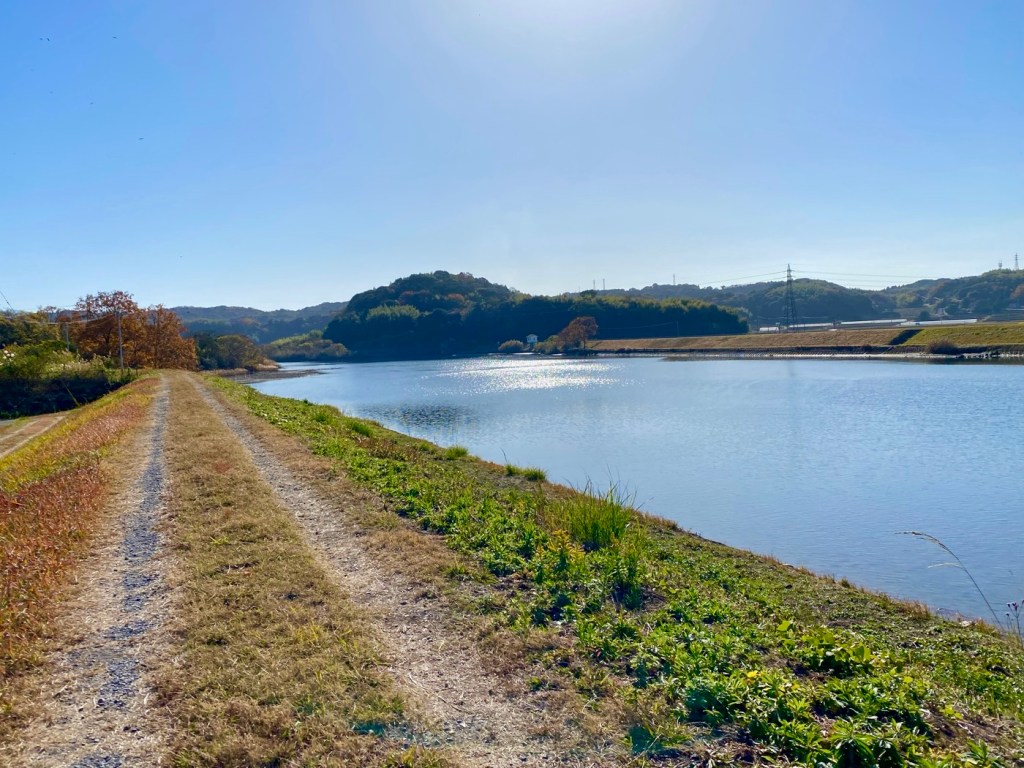


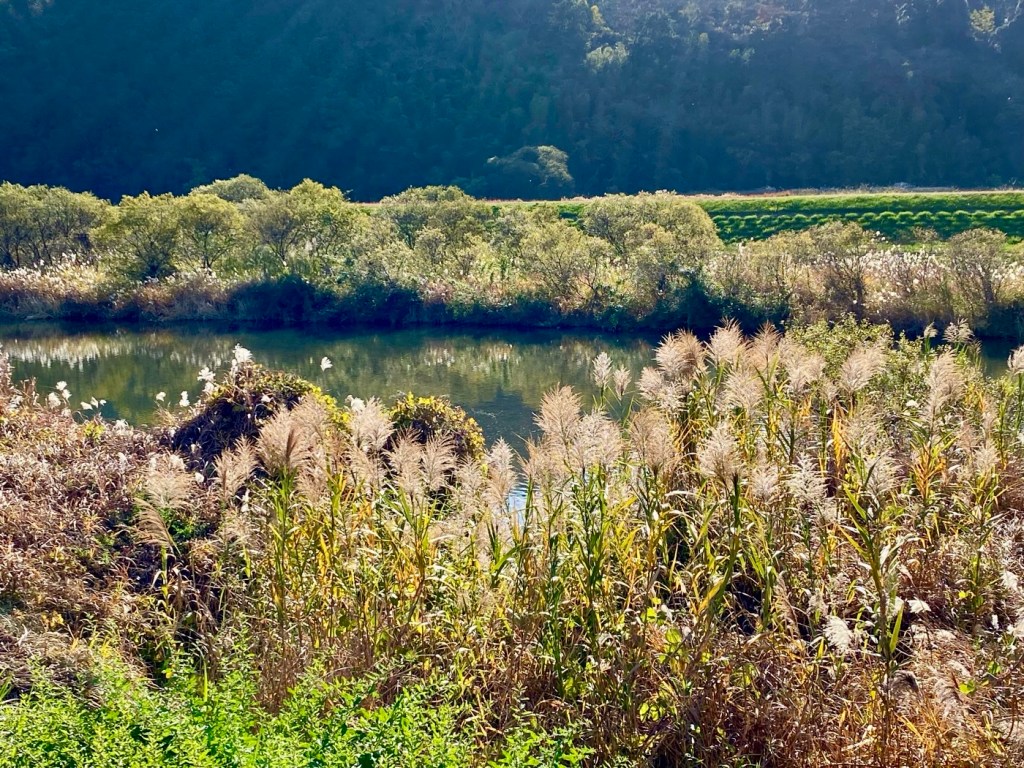
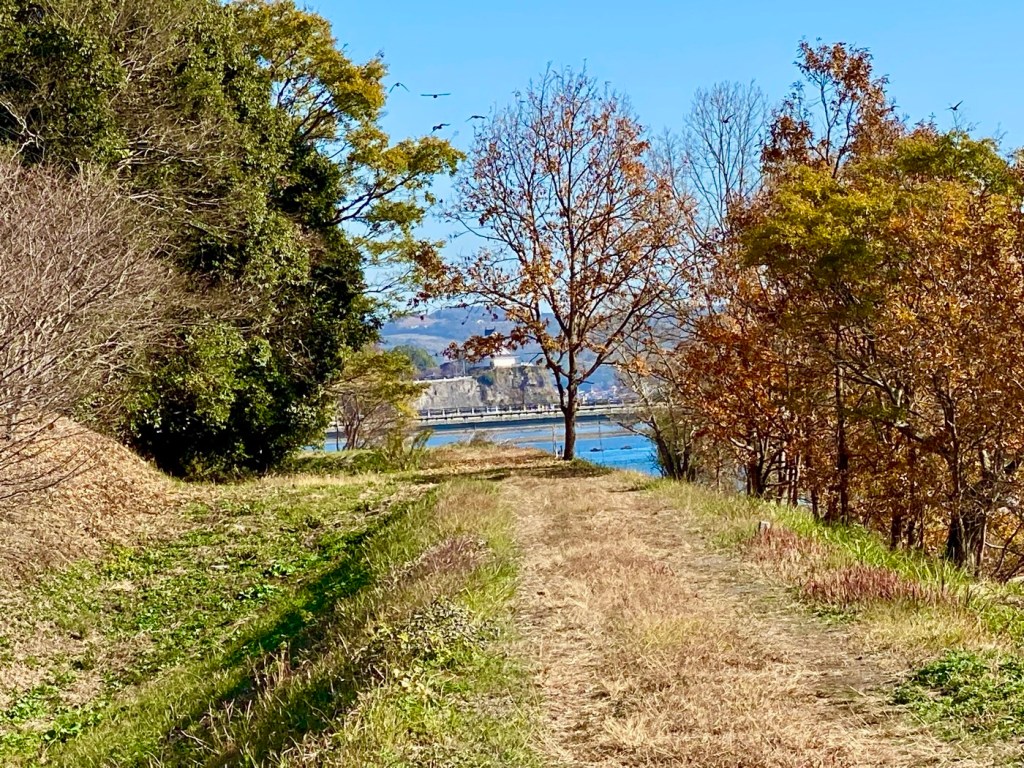
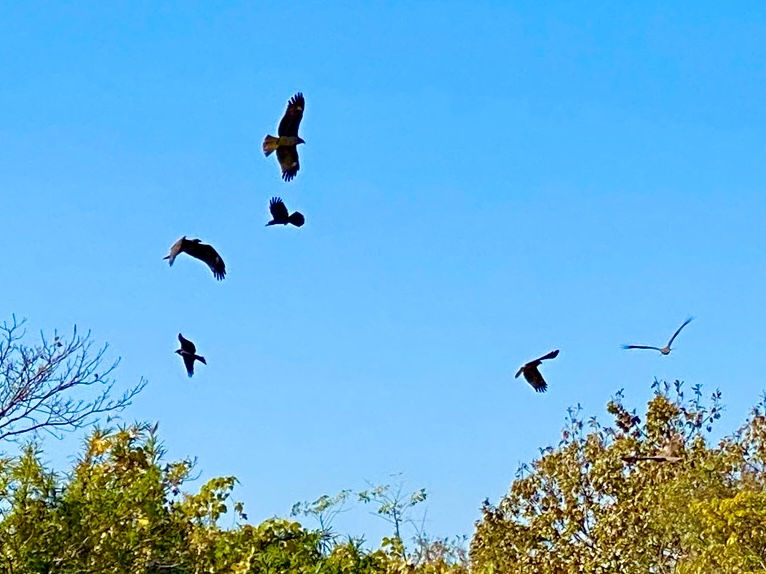
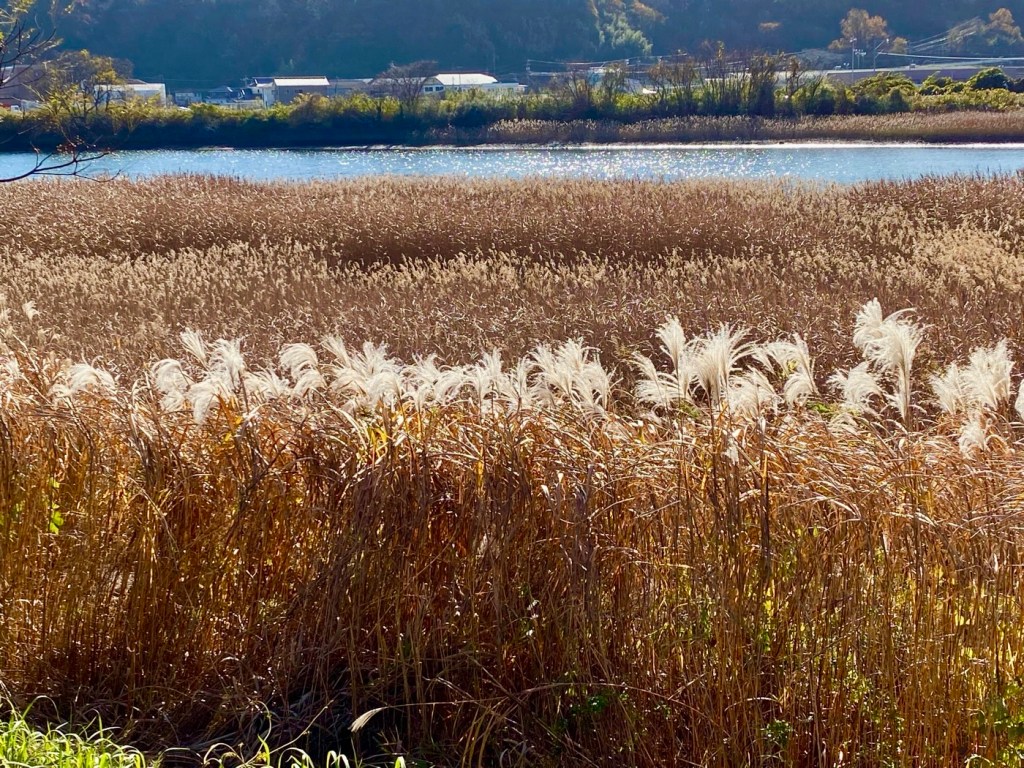



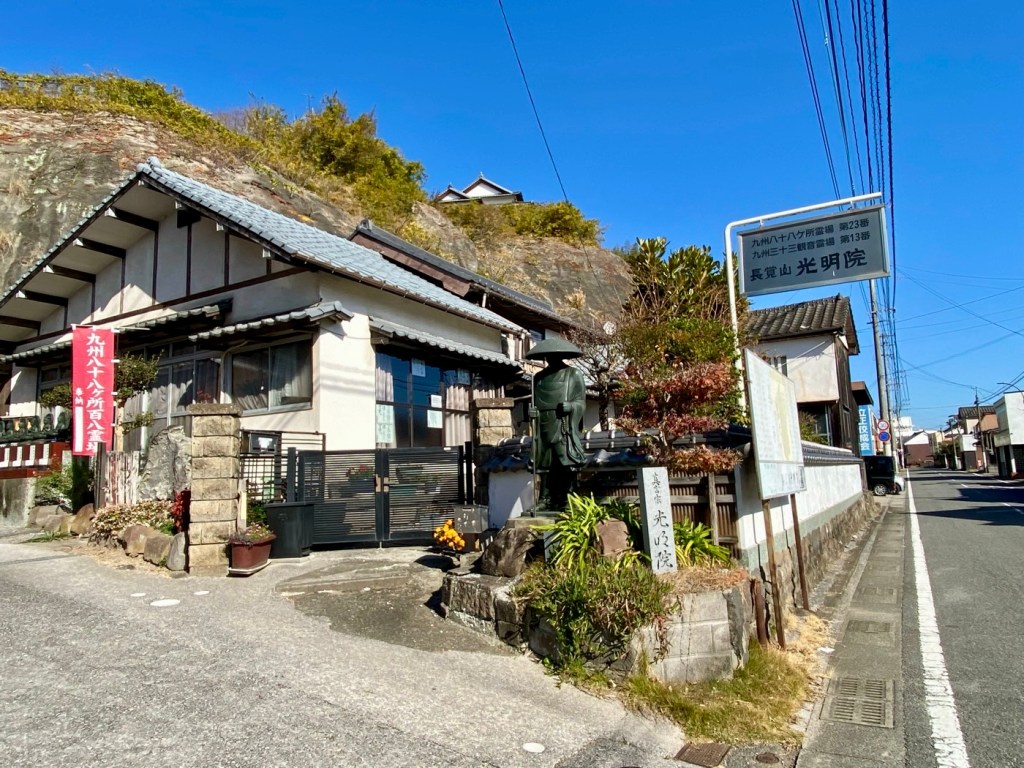

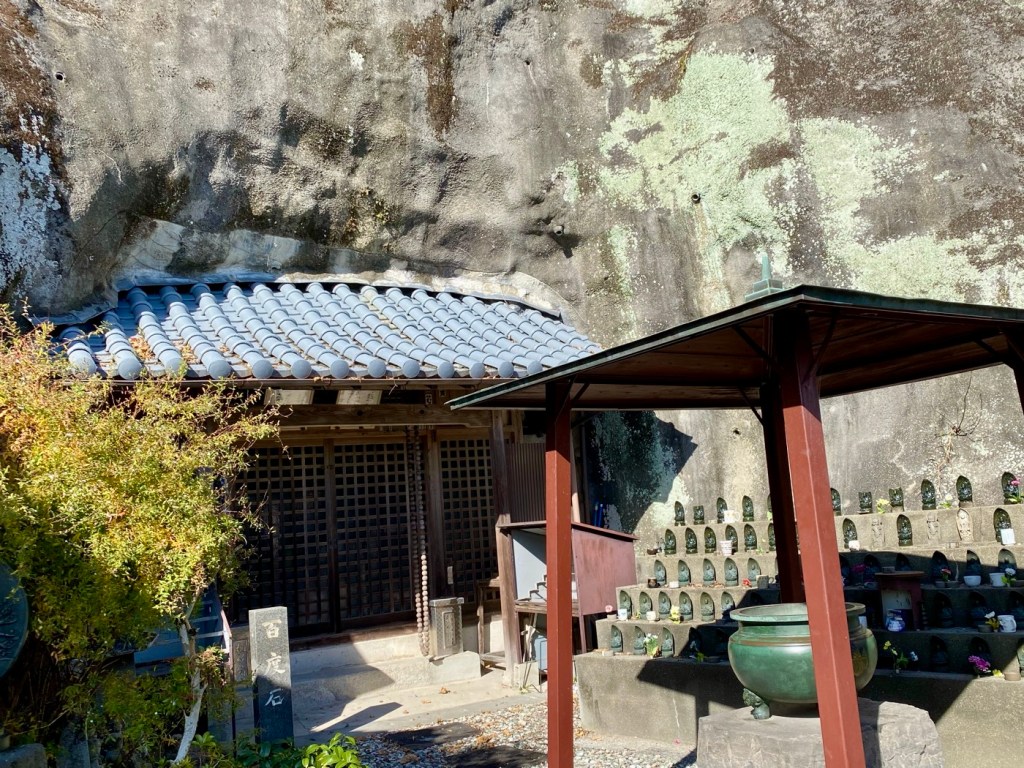


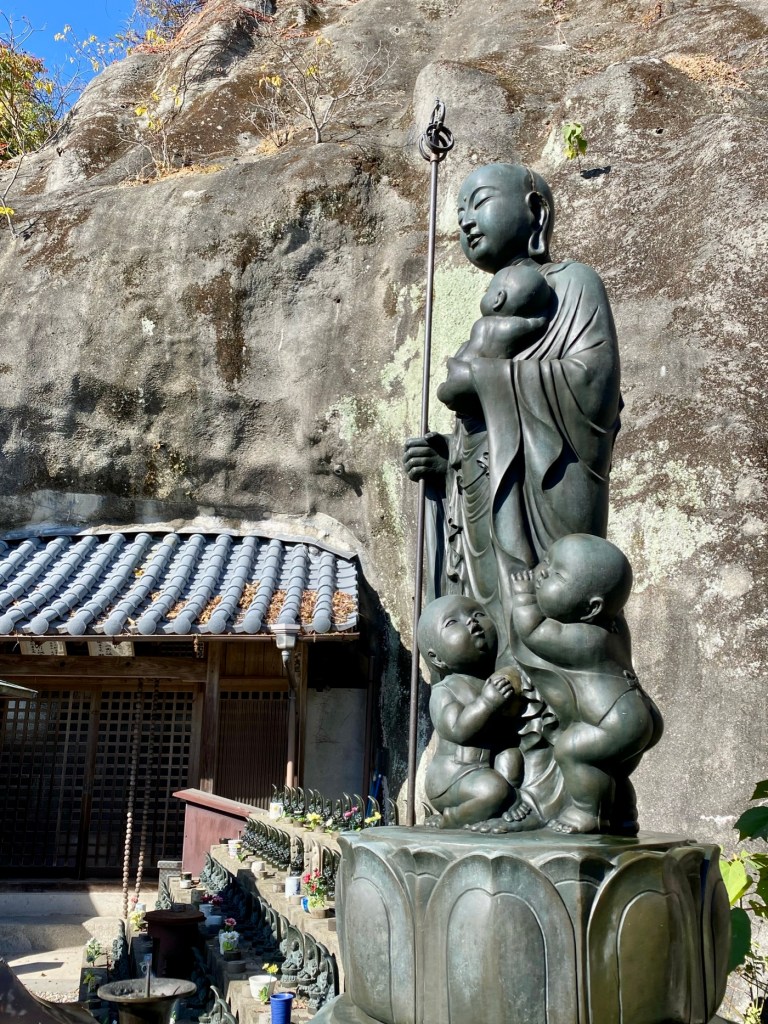


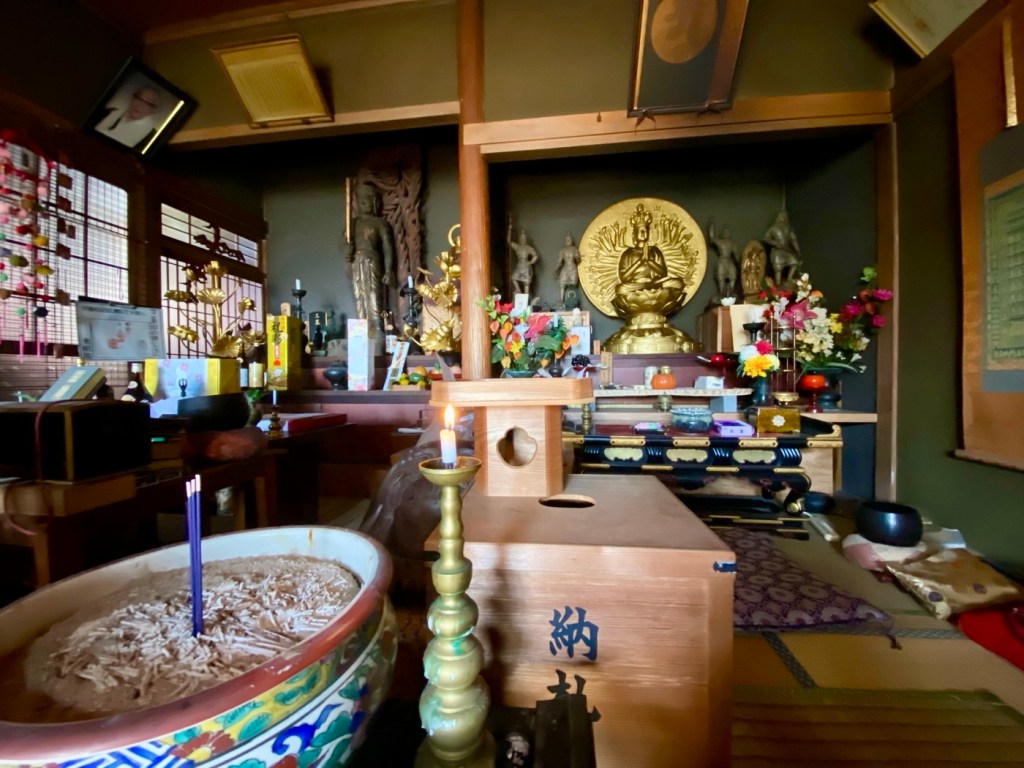


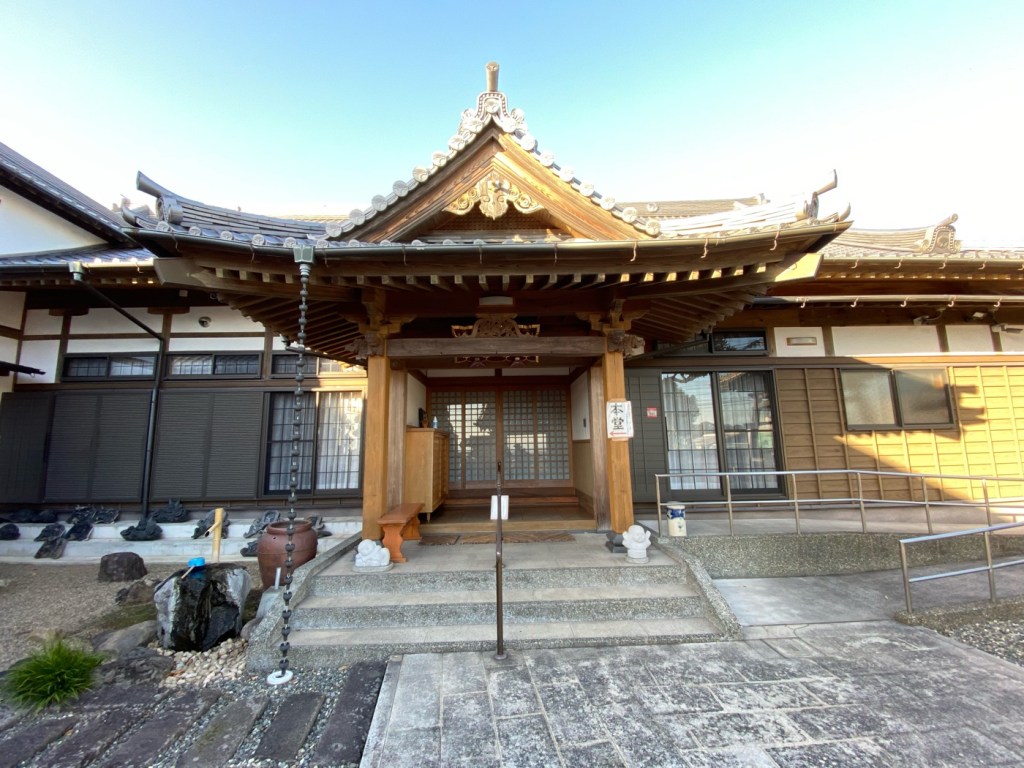
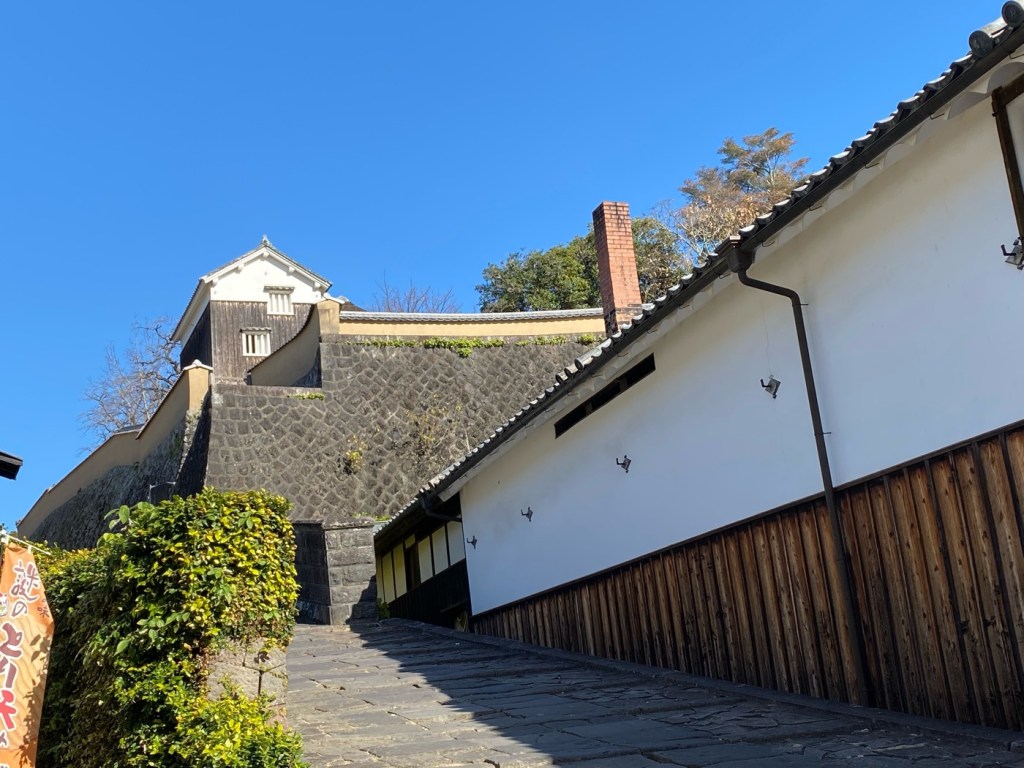



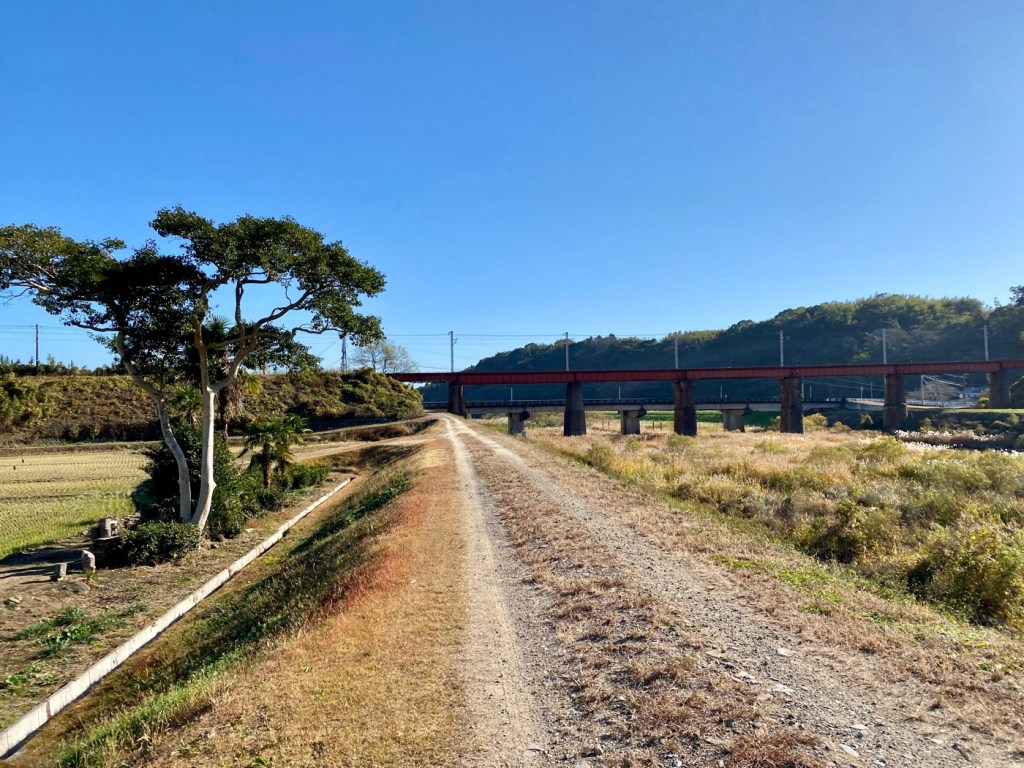

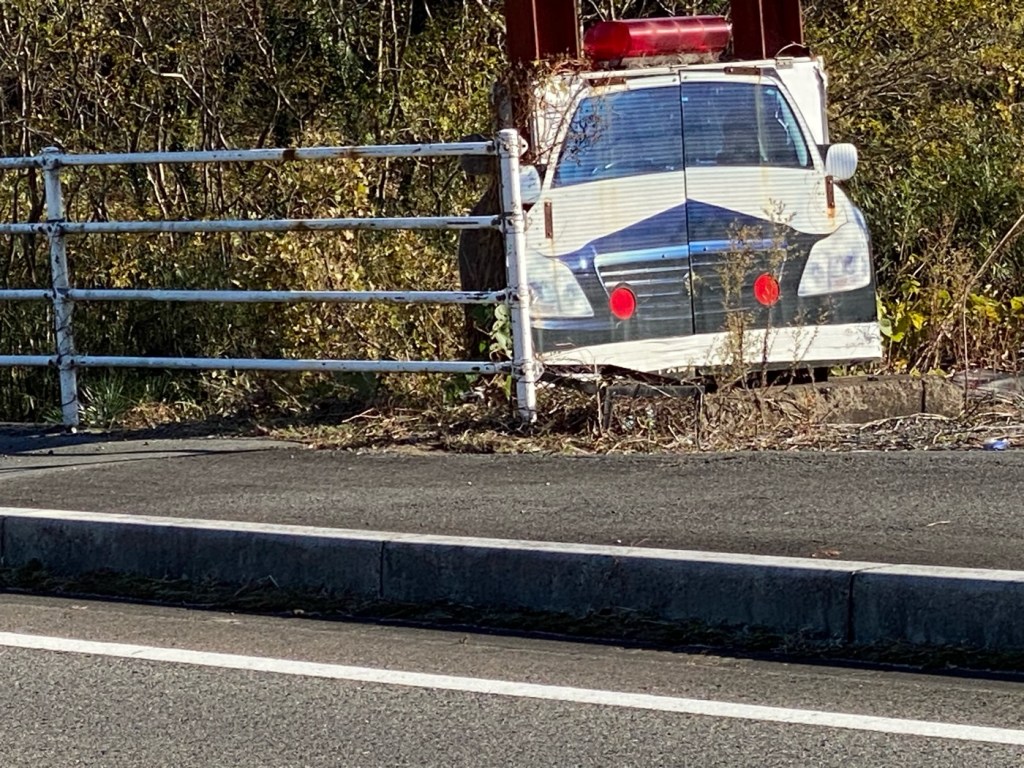
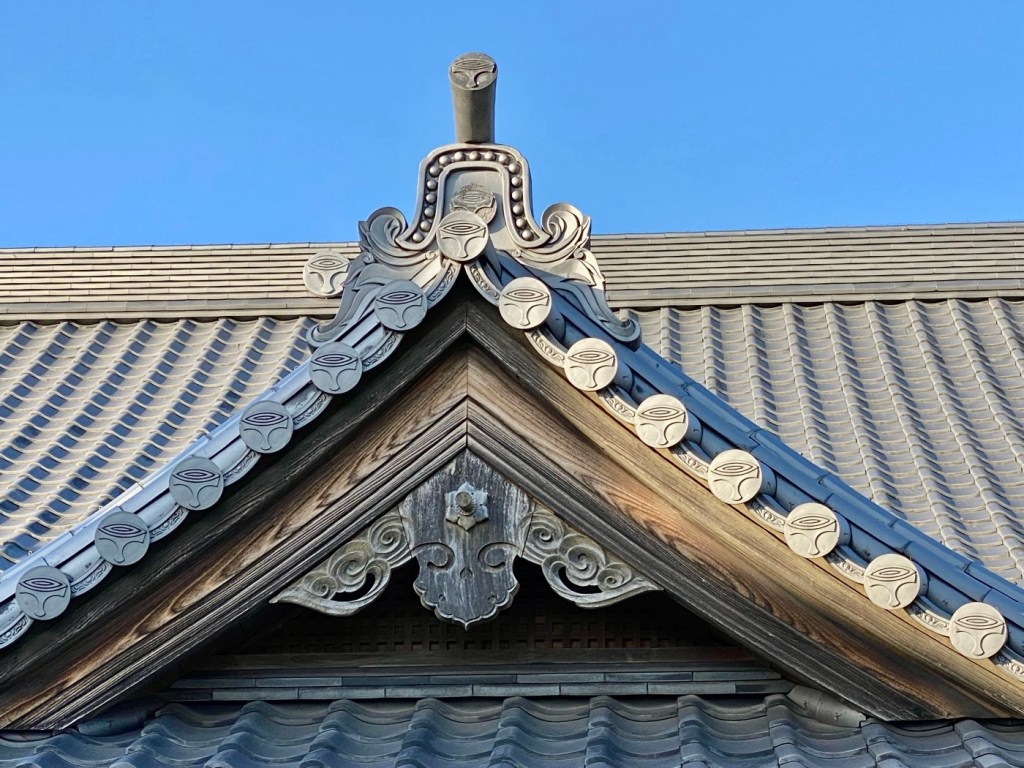
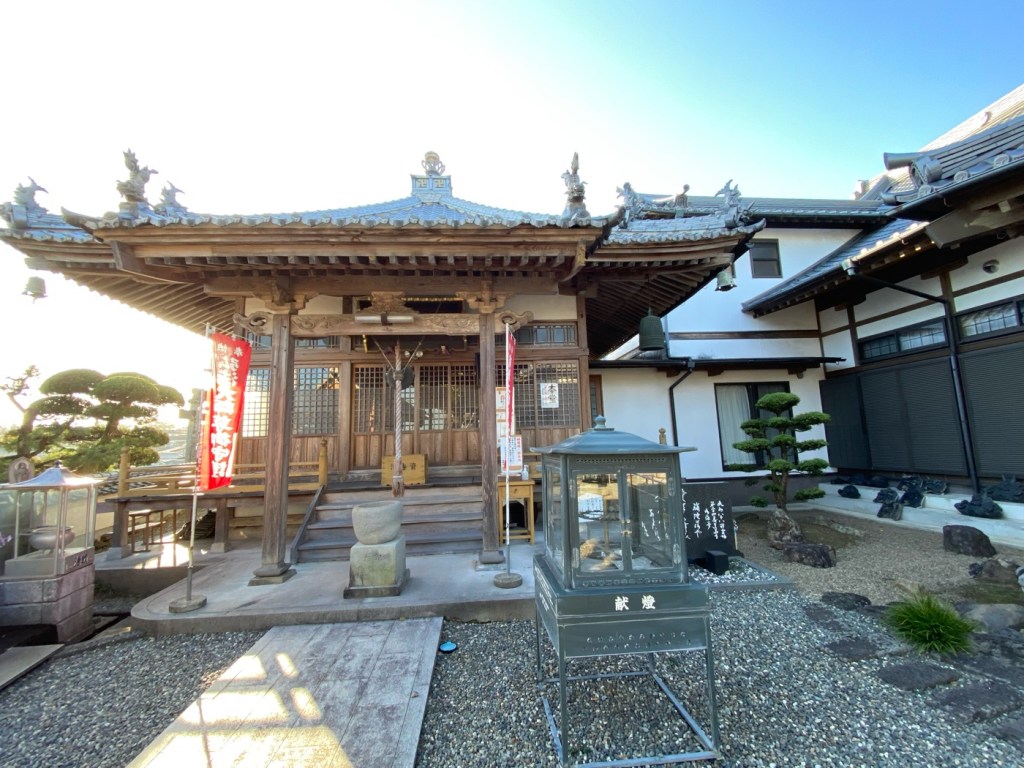




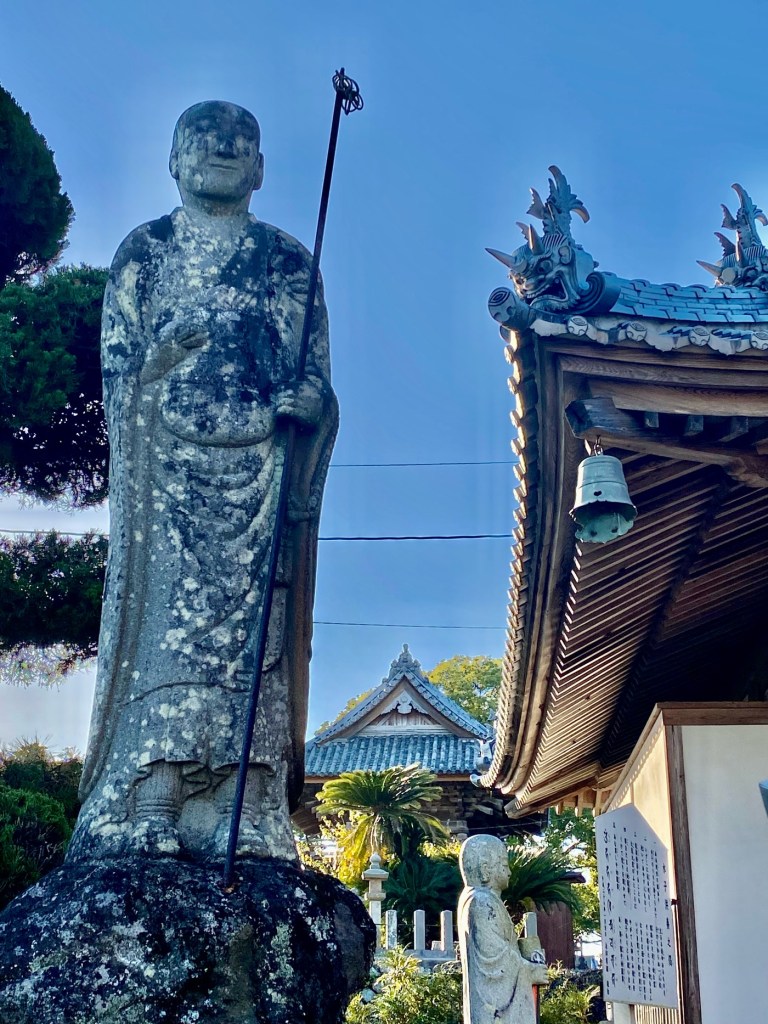
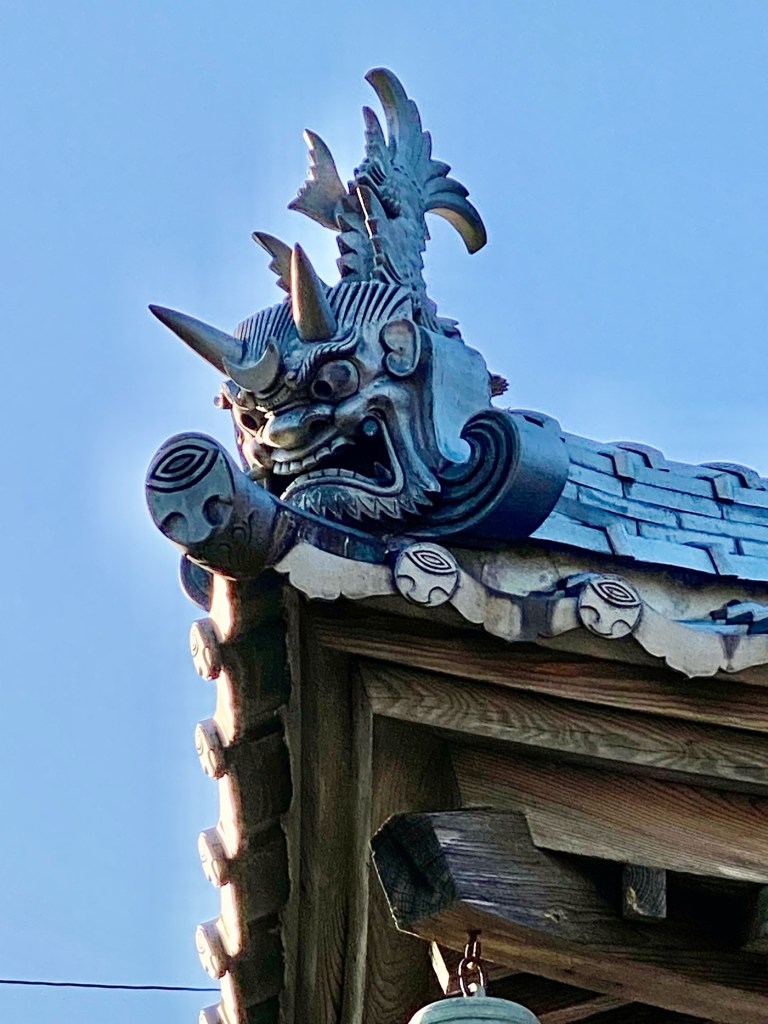

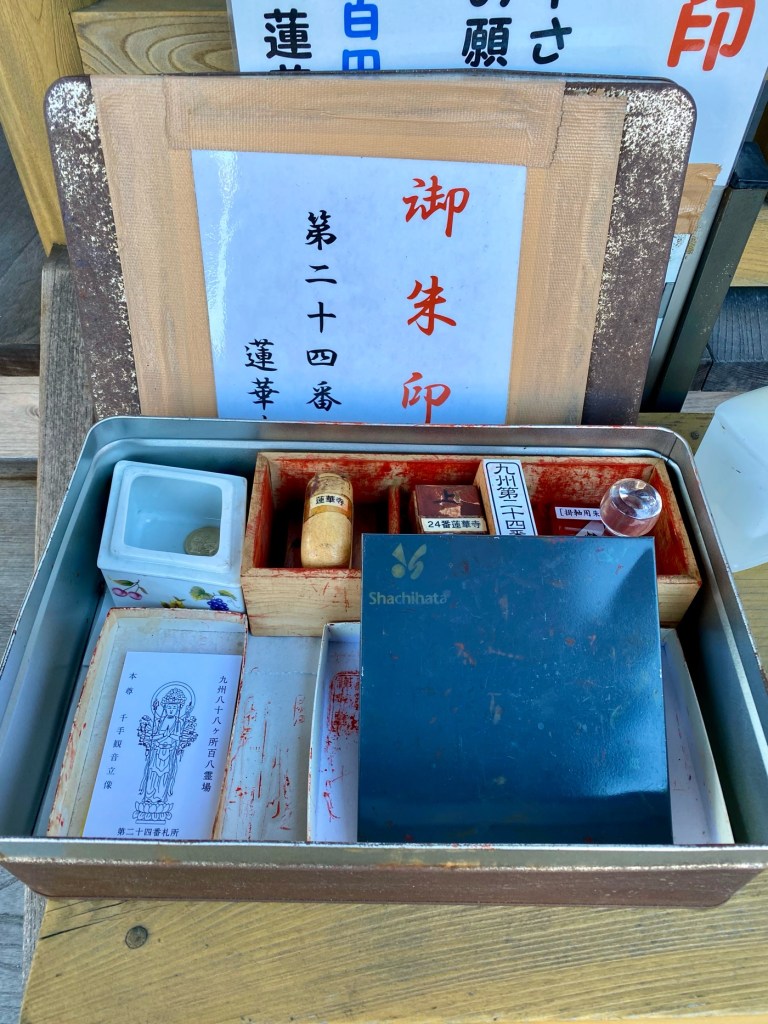
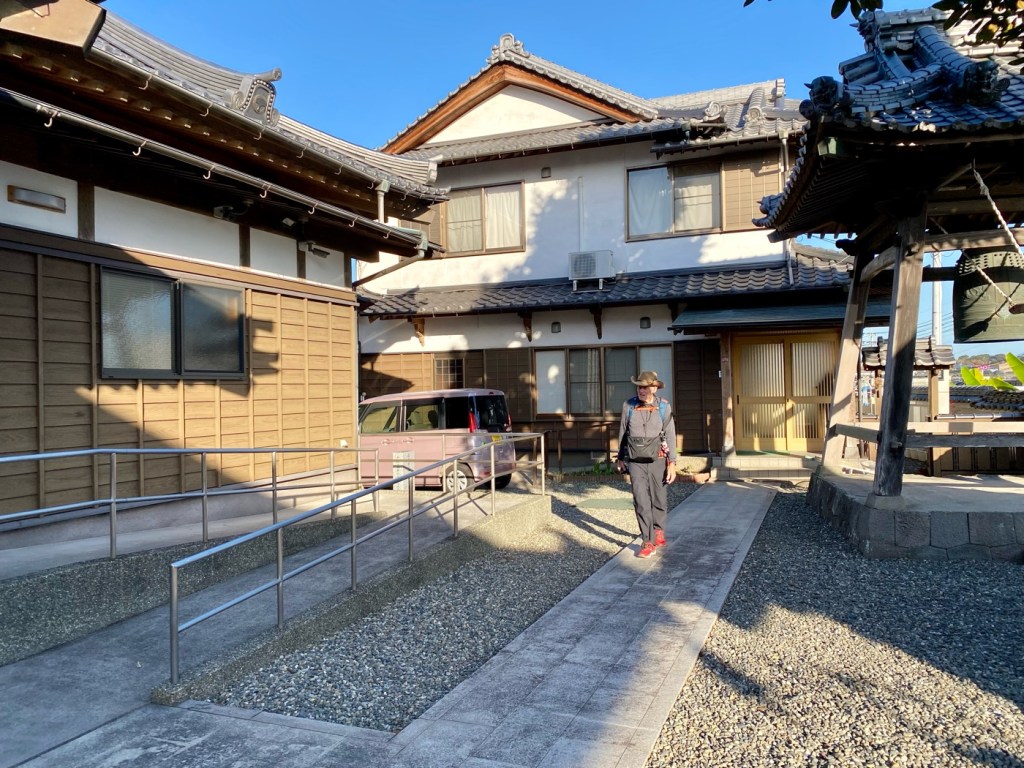
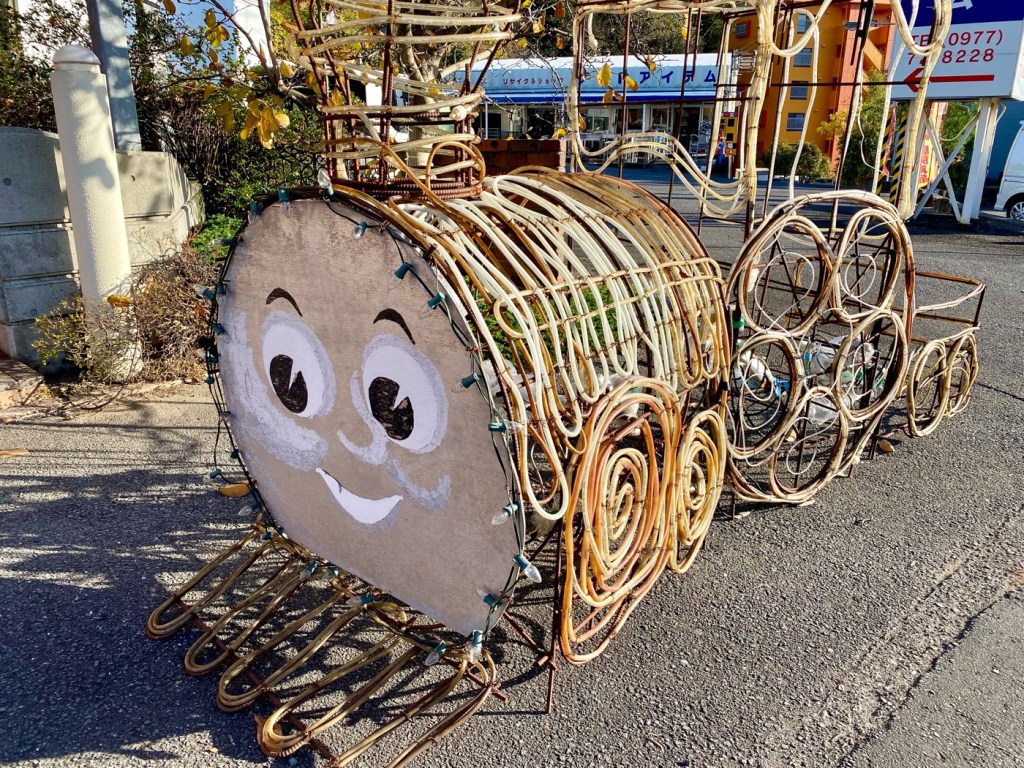
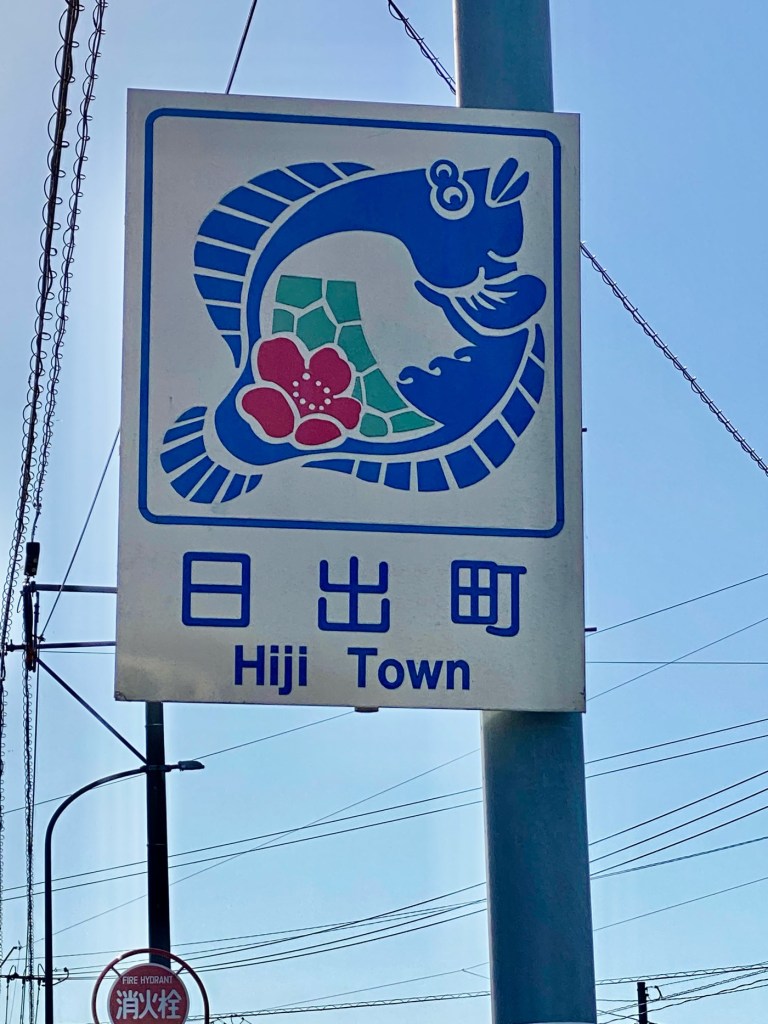


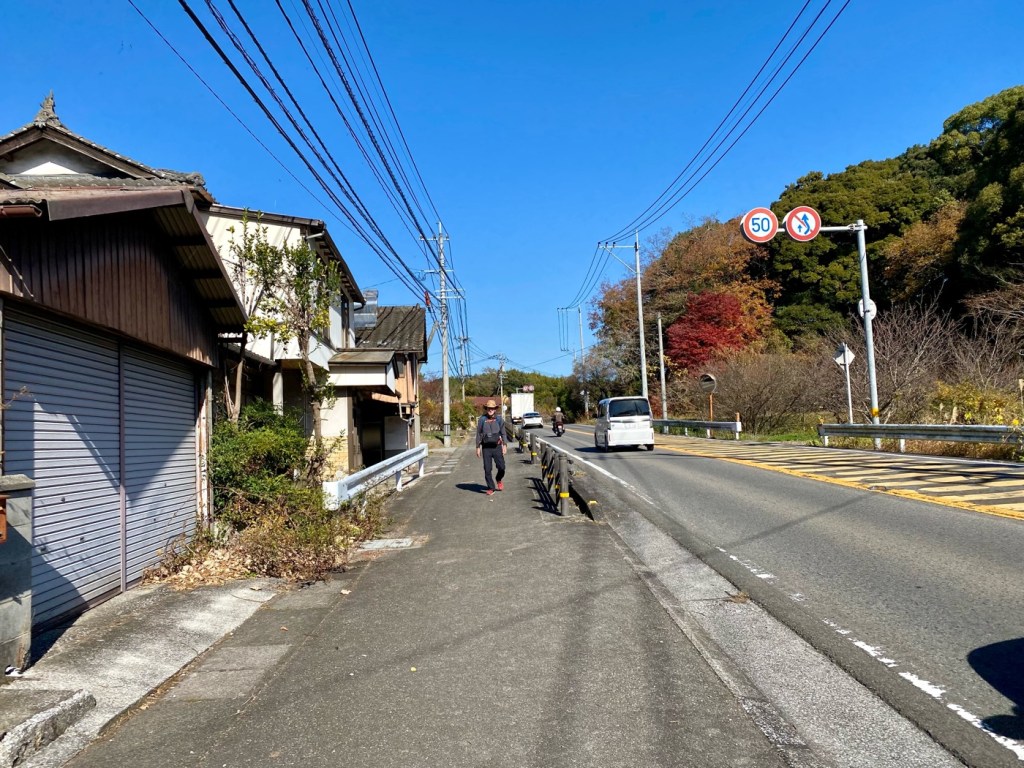
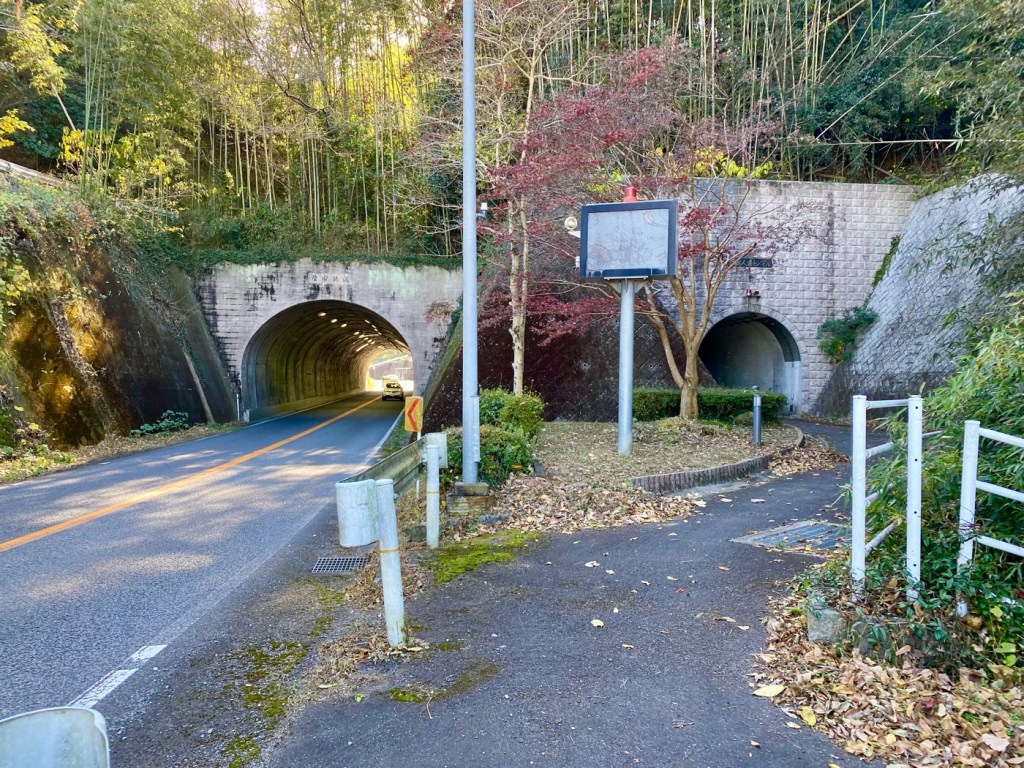

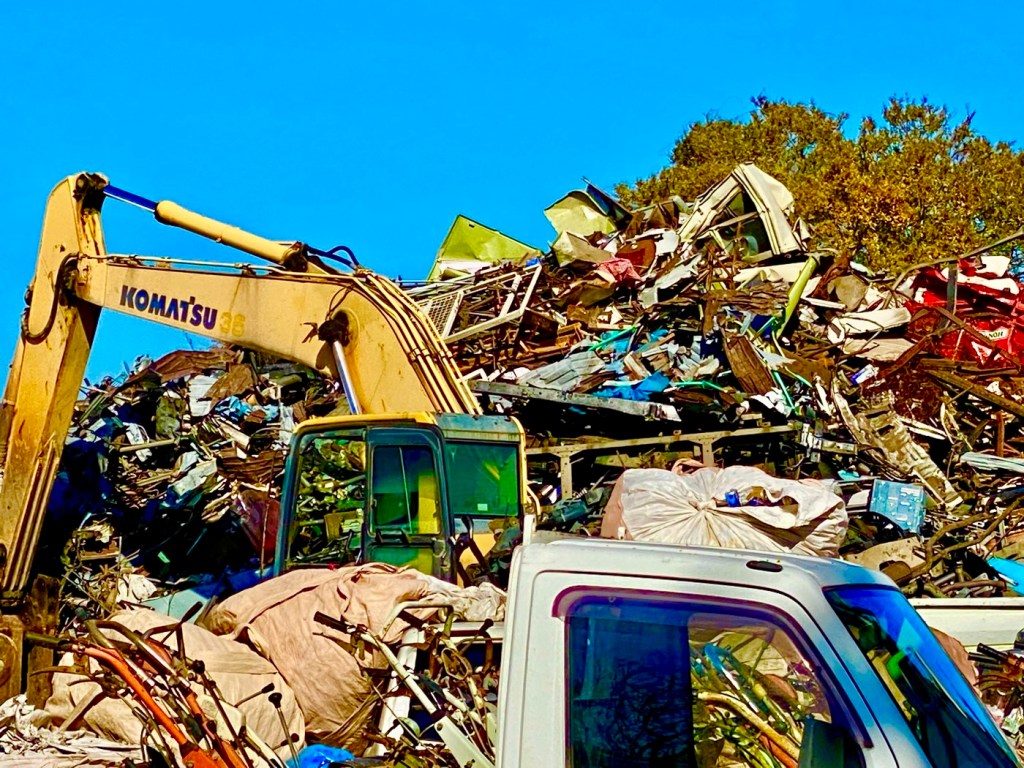
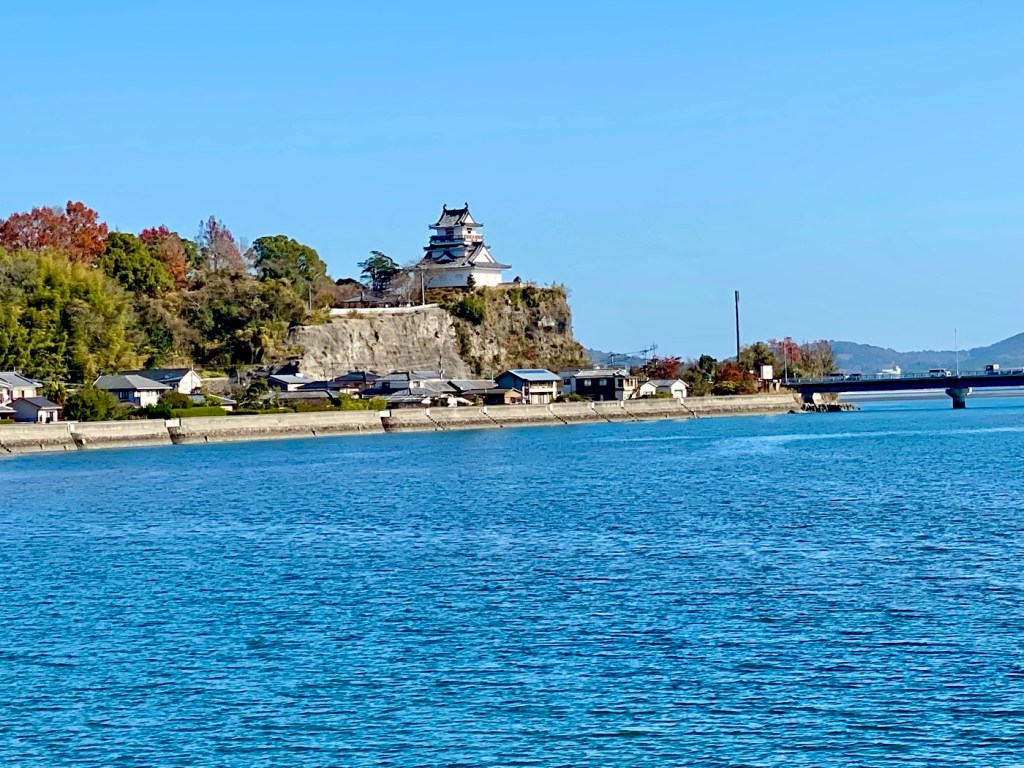
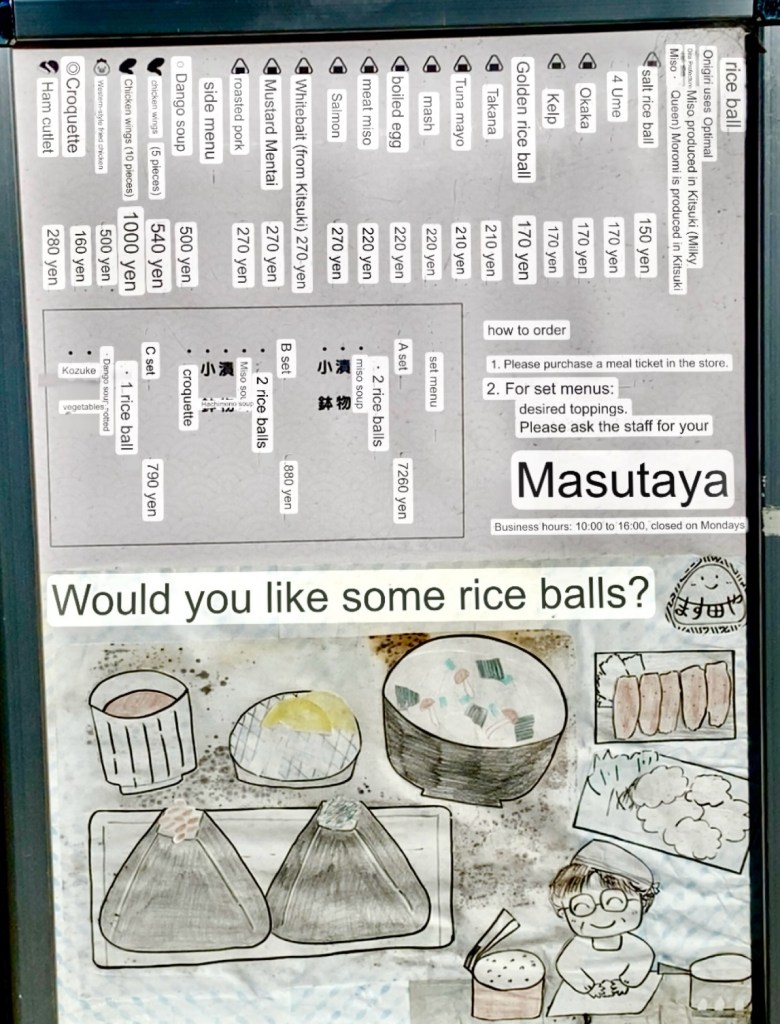

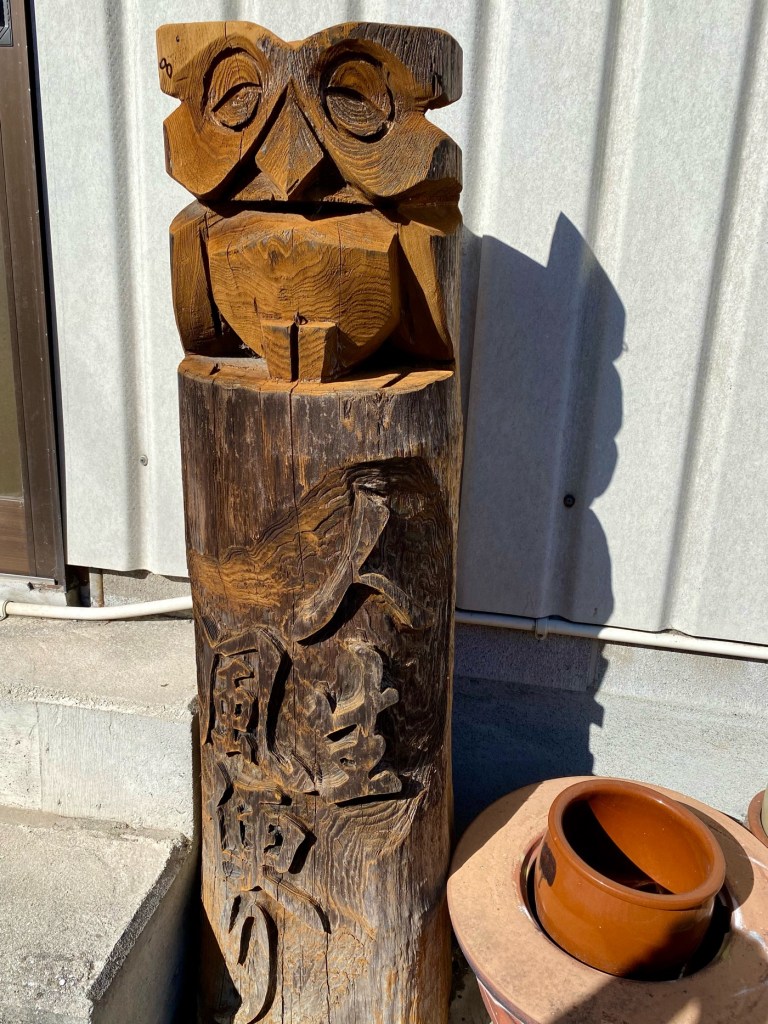

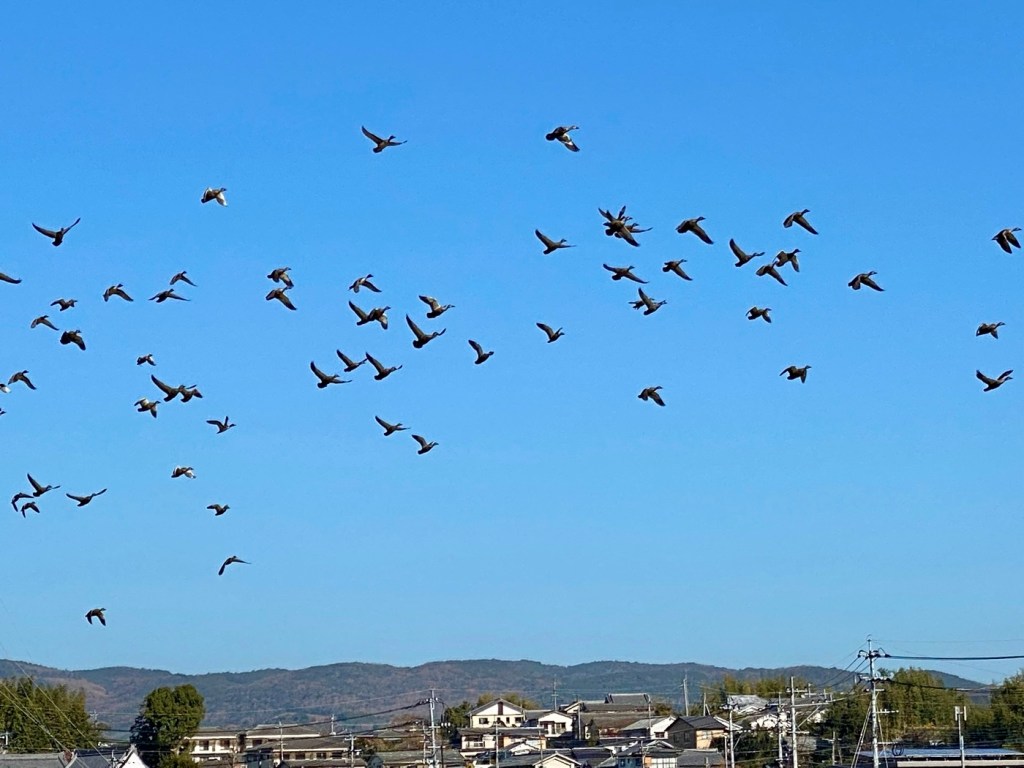
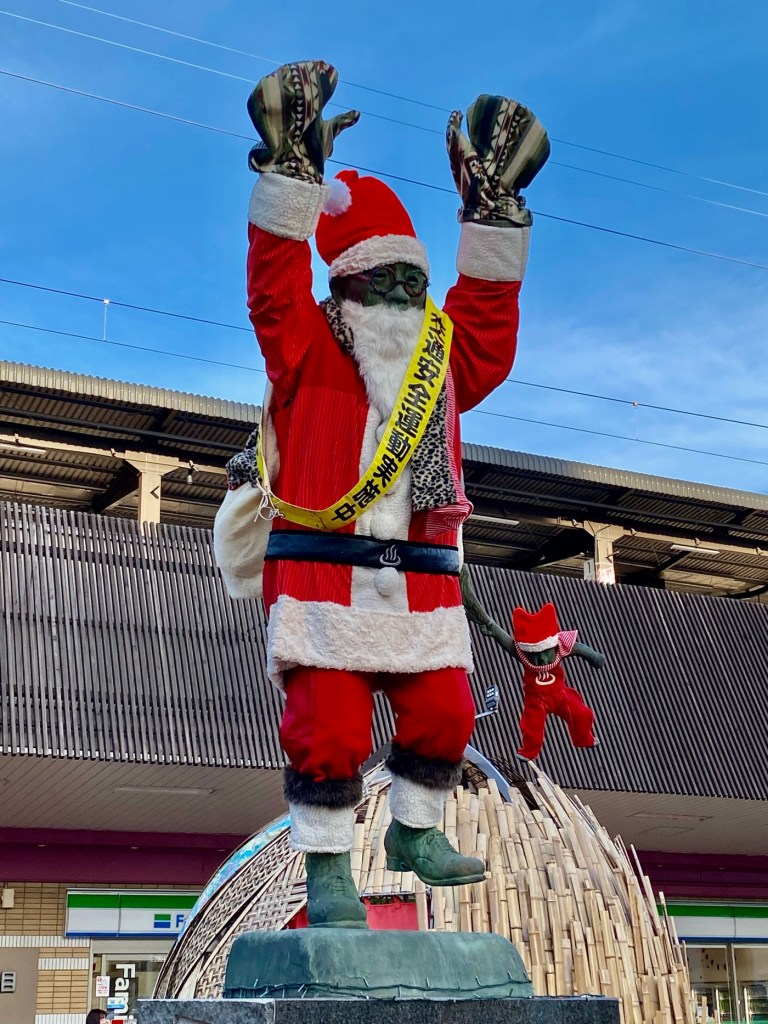
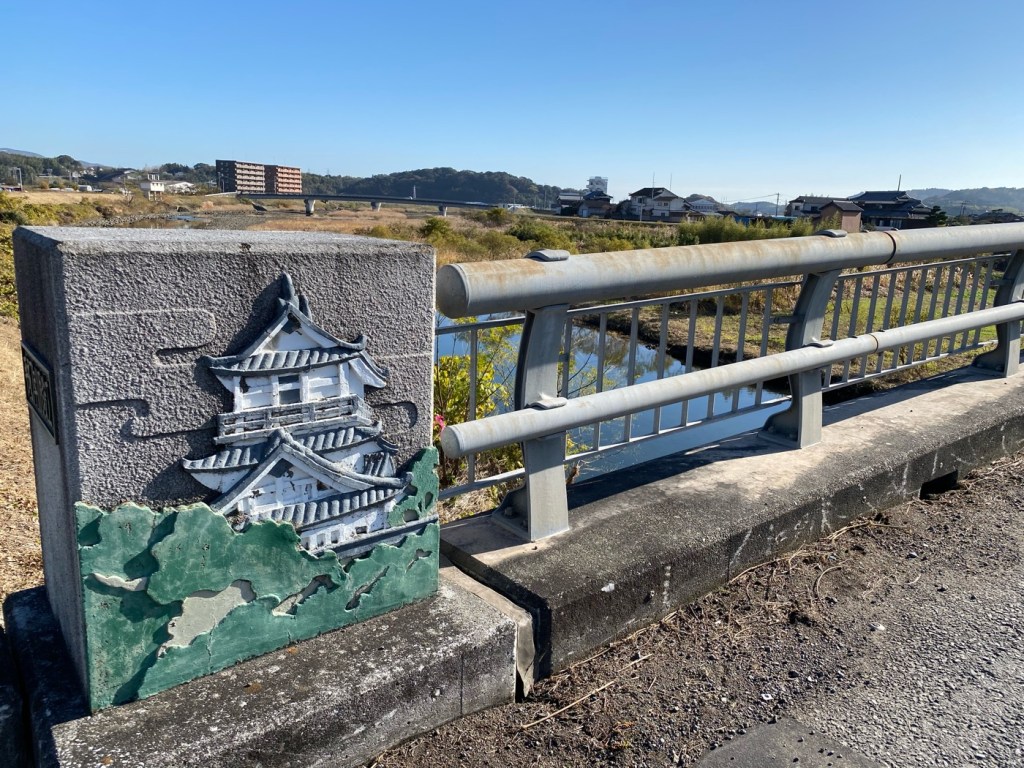


Day 75 - Visiting Two Castle Towns, Kitsuki and Hiji, The Kyushu 108 Temple Pilgrimage, Japan
Today we walked from the town of Kitsuki to the town of Hiji.
The town of Hiji is located just 13 km north of Beppu, where we are staying.
Our plan was to take a train to Kitsuki, walk to Temple #23 located on the water below the Kitsuki castle, and then walk on the inner mountain road to Hiji, where Temple #24 is located.
It was a beautiful sunny day, and we decided to take the path along the Yasaka River, which was not marked on my map.
Very often in Japan, the main river that flows through villages and towns has an unmarked trail on its banks.
The locals use it to exercise or just to stroll, and while it is not often paved, it is often mowed and somewhat maintained.
But some rivers don’t have those walking trails, so we decided to take a walk to see if the Yasaka River had one.
To our delight, it did have a long path that led us all the way to the temple.
The area was full of birds.
Above us we saw groups of hawks and hundreds of flying ducks.
Temple #23, Chokakuyama Komyoin, was founded in the Edo period, by Hidechika Matsudaira, the lord of Kitsuki Castle.
He enshrined the Fudo Myoo statue in 1645 to watch over the back demon gate of the Kitsuki Domain.
In the Kyoho era (1716-1736), the temple was rebuilt with the patronage of the third lord of the castle, Shigeyasu Matsudaira.
At that time, there were many halls and gates, but during the anti-Buddhist movement in the early Meiji period, it became an abandoned temple, and later it was restored by the chief priest, Junri Asano.
This temple's Goma-do hall is not an ordinary wooden structure.
It is a cave, with an opening under a huge rocky mountain.
Five great Myoos, including a Fudo Myoo, are enshrined in the cave Goma dojo.
The ancient principal image, Fudo Myoo, is enshrined in the main hall.
A young monk opened the door to the small main hall and invited us in.
There was a great amount of clutter and barely a narrow walkway between the piles of clutter to the office, which seems to be connected to his living quarters.
His laundry was hanging in the garden and everywhere there were signs that he was overwhelmed with chores and maintenance which he couldn’t complete.
He was friendly and kind and he stamped our book and scroll and gave us oranges as Osetai - gift offerings for pilgrims.
I didn’t know how to feel about his situation.
On one hand, I felt sad to see him live in such disarray.
A disorganized and untidy house is a sign of a troubled mind and an unsettled heart.
People who are in emotional turmoil live in disorganized houses.
So clearly he wasn’t enjoying the clarity of his inner landscape.
But as a priest, he is in a position where he is supposed to provide others with counsel and guidance, and comfort them in their struggles.
He is supposed to guide others towards inner peace.
Would you trust a disorganized priest to guide you towards higher realms?
From the temple we went to see the well preserved town below the castle ruins.
The shops along the Main Street were lovely and well preserved.
We were looking for something to buy to eat for lunch on the road, because the only place we could have lunch was a small community run cafe, which in my experience, might be open or not, because Google Maps is not always updated with correct information.
One of the places in the little town was an Onigiri bar.
Two women stood behind a bar that had a few stools.
They had a small menu of rice balls with different fillings, all made to order.
We ordered a few fresh Onigiri and sat and waited for them to be made.
We walked on the inner mountain road to Hiji.
It was a car road and sometimes there were sidewalks and sometimes there weren’t.
It wasn’t super scenic as it had some recycling facilities and a few dealerships and government buildings.
These cement high school buildings always look to me like prison buildings, massive, cold, spartan, ugly and without any design beauty, comfort or charm.
When I see these prisons-without-barbed-wire high schools, I always remember my visits to China, where I visited ancient mountain temples built with such great attention to nature and the seasons, that they looked like gems in the mountains, instead of eyesores in the middle of the beautiful nature.
These temples sometimes had an attached Confucius school where the kids learned.
The schools were beautiful too.
The buildings looked like grand halls of learning and there was often a garden with a creek and trees that bloomed at different times of the year.
Which school and environment do you think would breed better students with more self dignity?
Which school would give the kids a feeling that they matter and that they are precious beings, an ugly concrete sardine box or a beautiful wooden schoolhouse with roofs curving up into the sky and beautiful garden views from every window?
Our walk continued until we reached the community garden and cafe.
They sold flowering plants and some farmers market produce.
The cafe was open and we went in.
It was a bright and very clean place.
A few people were inside eating the great smelling curry meal set of the day.
It was described as a “community welfare cafe”, which actually means that they provided job opportunities for local women who might have had difficulties integrating into the workforce.
These women might be elderly or disabled or unable to drive to work.
Since we had our Onigiri with us, we only ordered desserts.
Jules had homemade ice cream and I had shaved ice with a sauce made from the local green oranges that the area is famous for.
It was great and the ladies were so sweet and kind.
They asked how we had gotten here, since there seemed to be no obvious way or even reason to pass through, and were very surprised to hear that we had walked there.
A woman who had stopped in to buy flowers, offered us a ride, which we refused.
Finally we reached the town of Hiji and walked to Temple #24, Atagoyama Rengeji.
It is a beautiful temple on a hill overlooking the sea.
Hiji is a town famous for a local fish that is called "The Castle Flounder".
It can be caught in the sea under the castle.
In this castle town, unlike in Kitsuki, only the walls of the old castle remain, along with a restored watch tower that looks out over the Beppu Bay.
The surrounding streets of the town give a glimpse of what Japan looked like during the Edo period, when the castle was built (1601).
Some of the structures that were built during the Edo period still exist today, like the Chidokan, a traditional school built in 1858. There, the children of local samurai families were taught a variety of subjects ranging from calligraphy to medicine.
This institution was one of 255 domain (han) schools that made up a nationwide, state-organized education system which existed parallel to the temple-organized Terakoya education system.
The Chidokan was moved to a new location inside the Hiji Castle fortifications, during its restoration in 1951.
From the gate of Rengeji temple, you can see Mt. Takasaki, a mountain known for its population of monkeys.
The temple had flourished as a prayer temple for the former lord of the Hiji Domain.
The principal image is a "Senju Kannon" and "Nirvana-Zu", both designated as cultural properties of the prefecture.
The garden is a 400-year-old Satsuki garden.
The Satsuki azalea bloom in May, but the garden can be visited year round, as it a garden that contains the three essential elements of Japanese landscaping - plants, water and stone.
The aim of the garden is to inspire relaxation, meditation and rejuvenation.
By car, Hiji is only a 15 minute drive north of Beppu, but it took us the whole day on foot to visit Hiji and Kitsuki.
We returned to Beppu and rested our tired feet in the hot springs.
With much love,
Tali
Stats: 31,882 steps
Today’s walk: 22.5 km
Kilometers walked to date: 1268.5 km
Temples visited:
Temple #23 Chokakuyama Komyoin.
Temple # 24 Atagoyama Rengeji.